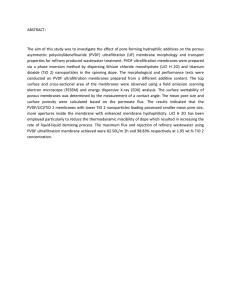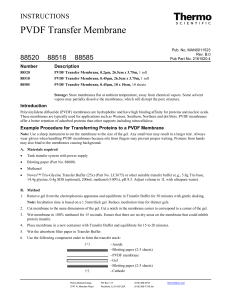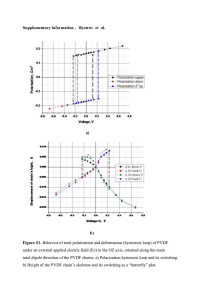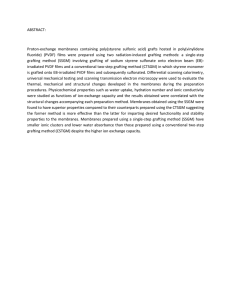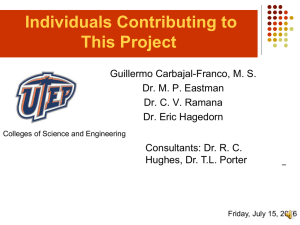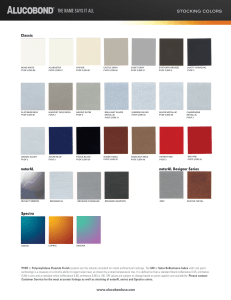ABSTRACT: Porous polyvinylidenefluoride (PVDF) hollowfibermembranes were fabricated via a wet phase-inversion
advertisement
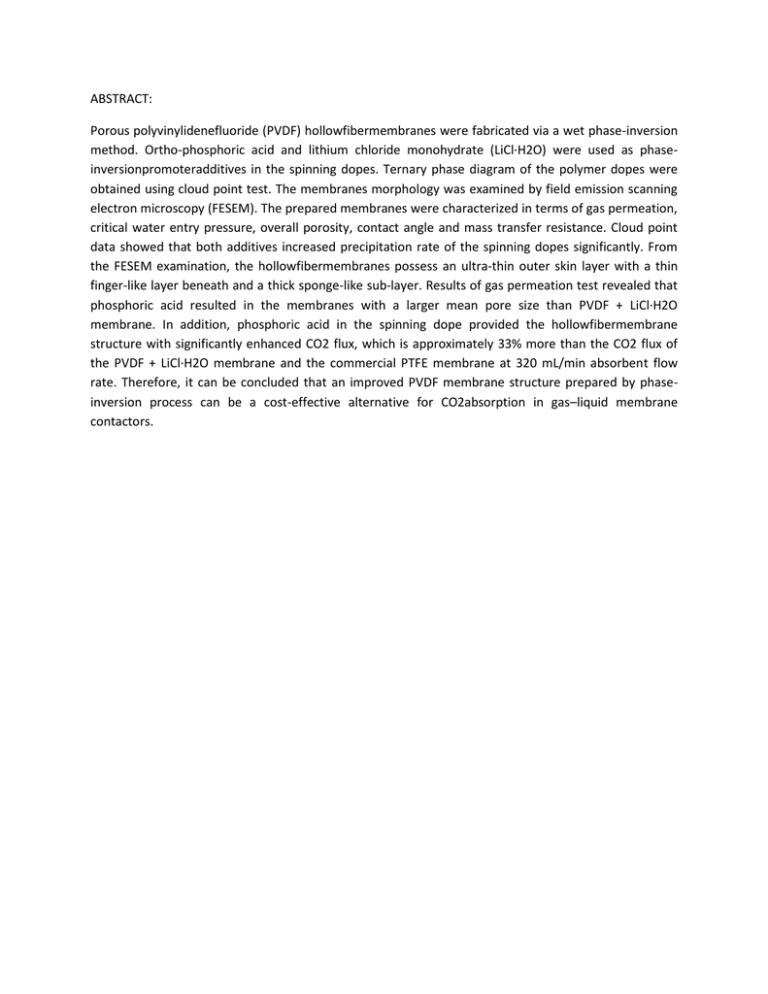
ABSTRACT: Porous polyvinylidenefluoride (PVDF) hollowfibermembranes were fabricated via a wet phase-inversion method. Ortho-phosphoric acid and lithium chloride monohydrate (LiCl·H2O) were used as phaseinversionpromoteradditives in the spinning dopes. Ternary phase diagram of the polymer dopes were obtained using cloud point test. The membranes morphology was examined by field emission scanning electron microscopy (FESEM). The prepared membranes were characterized in terms of gas permeation, critical water entry pressure, overall porosity, contact angle and mass transfer resistance. Cloud point data showed that both additives increased precipitation rate of the spinning dopes significantly. From the FESEM examination, the hollowfibermembranes possess an ultra-thin outer skin layer with a thin finger-like layer beneath and a thick sponge-like sub-layer. Results of gas permeation test revealed that phosphoric acid resulted in the membranes with a larger mean pore size than PVDF + LiCl·H2O membrane. In addition, phosphoric acid in the spinning dope provided the hollowfibermembrane structure with significantly enhanced CO2 flux, which is approximately 33% more than the CO2 flux of the PVDF + LiCl·H2O membrane and the commercial PTFE membrane at 320 mL/min absorbent flow rate. Therefore, it can be concluded that an improved PVDF membrane structure prepared by phaseinversion process can be a cost-effective alternative for CO2absorption in gas–liquid membrane contactors.
